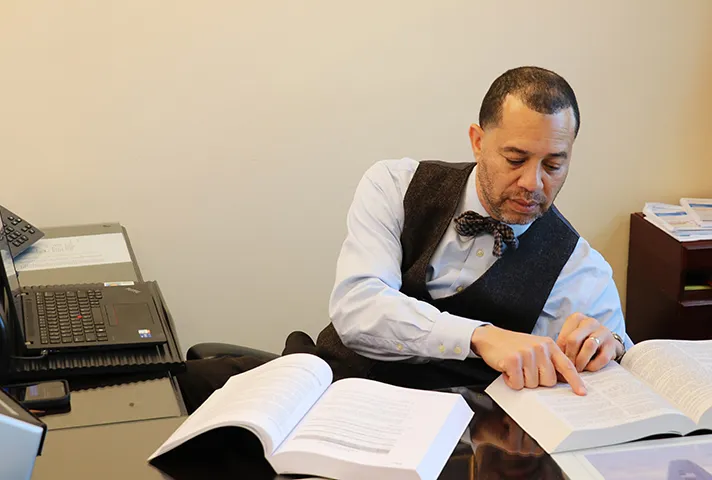Determining an appropriate sentence is one of the most critical decisions in the criminal justice process. By law, courts must impose sentences that are “sufficient but not greater than necessary” to accomplish the goals of sentencing: punishment, deterrence, community safety, and rehabilitation.
The Role of Probation Officers
Probation officers have substantial responsibilities in assisting the court during the sentencing phase. The probation officer conducts an independent and impartial investigation of the defendant and the offense before making a sentencing recommendation to the judge. To conduct the investigations, officers must have strong writing, investigatory, and analytical skills. Presentence investigation officers come from a variety of educational and professional backgrounds, such as law enforcement, social work, and law.

Conducting extensive research is an important part of effective presentence investigations. Officers rely on a variety of resources to compile the presentence report.
The Presentence Investigation
When a defendant pleads guilty or is found guilty of a crime, prior to sentencing, a presentence investigation and report are completed to ensure the judge has as much information as possible to determine an appropriate sentence.
During the presentence investigation, the officer conducts an extensive interview with the defendant to discuss the individual’s history and background, including childhood experiences, family factors, education, employment, criminal history, finances, physical and mental health, and alcohol or drug use. The officer verifies the information through contacts with family members, friends, employers, and community members.
During this stage, the officer also gathers documentation that can provide useful information for the court, such as court and school records, military service and employment records, and documents related to the defendant’s finances and medical and employment history. The officer also conducts a thorough review of the criminal offense, including interviews with law enforcement officers and victims.
The Presentence Report
The presentence report summarizes information gathered during the presentence investigation, including the offense, prior criminal history, social history, applicable advisory Federal Sentencing Guidelines, and victim impact statements.
In the report, the officer provides a sentencing recommendation, which includes an analysis and justification. The process entails a careful analysis of the nature and circumstances of the offense, the history and characteristics of the defendant, and the applicable statutes and advisory sentencing guidelines. The recommendation includes information about any departures from the guidelines that may be relevant to the case.
Prior to sentencing, the report is reviewed for accuracy by the defendant, the defense counsel, and the prosecutor. The parties can recommend changes to the report. In response, the officer either makes the requested changes or explains why they were not made.
Typically, the officer attends the sentencing hearing and may be called on by the court to answer questions or provide additional information. Before imposing a sentence, the judge considers information from the presentence report, the defense counsel, and the prosecutor and statements from the defendant and sometimes from victims.

Additional Uses of Presentencing Reports
The presentence report can be useful beyond the sentencing hearing. For example, the Bureau of Prisons relies on presentence reports for custody location and classification, and to determine programming needs. Following the defendant’s release from custody, probation officers rely on the presentence report to assist with reentry planning and post-conviction supervision.
